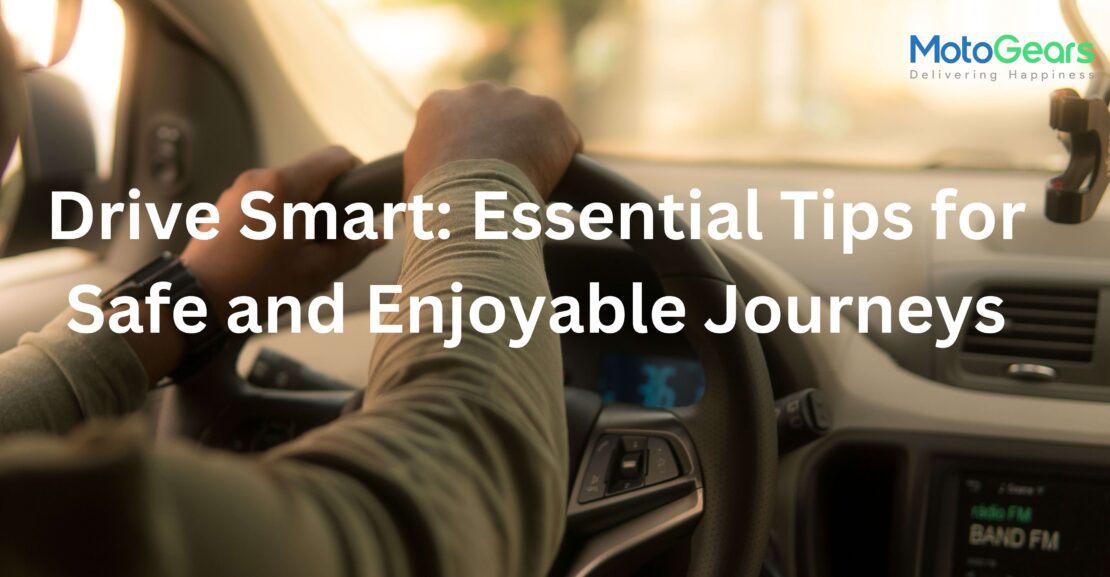Driving can be a pleasurable and convenient way to get around, but it also comes with significant responsibilities. Ensuring that every trip is safe and enjoyable requires a combination of good habits, awareness, and preparedness. Here are some essential tips to help you drive smart and make your journeys safer and more enjoyable.
Maintain Your Vehicle
Regular maintenance is crucial for your vehicle’s performance and safety. Here’s what you should do:
- Regular Inspections: Check your vehicle’s fluids, brakes, tires, and lights regularly. Look for any signs of wear and tear that might need attention.
- Oil Changes: Follow your manufacturer’s recommendations for oil changes to keep the engine running smoothly and efficiently.
- Tire Care: Ensure your tires are properly inflated and have adequate tread. Rotate them regularly to promote even wear and prolong their lifespan.
- Battery Checks: Regularly inspect your car battery for corrosion and ensure it holds a charge.
Plan Your Trip
Planning ahead can save time, reduce stress, and keep you safe:
- Know Your Route: Familiarize yourself with the route and check traffic updates to avoid congestion and find the best path to your destination.
- Weather Conditions: Check the weather forecast and be prepared for any changes that might affect your drive. Rain, snow, and fog can all impact driving conditions.
- Rest Stops: Plan for breaks on long journeys to avoid fatigue. A well-rested driver is a safer driver. Take breaks every couple of hours to stretch and refresh.
Stay Focused and Alert
Distractions and drowsiness are major contributors to accidents:
- No Phone Use: Keep your phone out of reach or use hands-free devices if absolutely necessary. Avoid texting or using apps while driving.
- Avoid Multitasking: Eating, grooming, or fiddling with the car’s controls while driving can be dangerous. Keep your focus on the road.
- Stay Rested: Ensure you’re well-rested before driving. If you feel tired, pull over and take a break or switch drivers if possible.
- Stay Hydrated and Nourished: Drink water and eat light, healthy snacks to maintain your energy levels and concentration.
Follow Traffic Laws
Adhering to traffic laws is fundamental to road safety:
- Speed Limits: Obey speed limits and adjust your speed according to road conditions. Speeding reduces your reaction time and increases the severity of accidents.
- Traffic Signals and Signs: Pay attention to and follow all traffic signals and road signs. They are there to guide and protect you.
- Safe Distance: Maintain a safe following distance to give yourself enough time to react to sudden stops. The three-second rule is a good guideline.
- Use Turn Signals: Signal your intentions well in advance to inform other drivers of your actions.
Drive Defensively
Defensive driving can prevent accidents and keep you safe:
- Anticipate Hazards: Be aware of potential hazards and be prepared to react to them. Watch for sudden stops, erratic drivers, and road obstacles.
- Stay Visible: Ensure other drivers can see you. Use your headlights in poor visibility and signal your intentions well in advance.
- Predictable Actions: Make your actions predictable to other drivers by avoiding sudden maneuvers and lane changes. Smooth and steady driving is safer and more fuel-efficient.
Adapting to Road Conditions
Different conditions require different driving approaches:
- Rain and Wet Roads: Slow down, increase your following distance, and use your headlights. Be cautious of hydroplaning and reduced visibility.
- Snow and Ice: Drive slowly, avoid sudden movements, and use winter tires if necessary. Accelerate and brake gently to maintain control.
- Night Driving: Use your headlights appropriately, reduce speed, and increase your alertness. Be aware of pedestrians and animals that may be harder to see in the dark.
Emergency Preparedness
Being prepared for emergencies can make a big difference:
- Emergency Kit: Keep an emergency kit in your car, including a first-aid kit, flashlight, water, blankets, and basic tools.
- Roadside Assistance: Have a roadside assistance plan or know the numbers of local tow services. This can save time and stress if you encounter car trouble.
- Know What to Do: Familiarize yourself with basic troubleshooting, like changing a tire, jump-starting a battery, and checking fluid levels. Knowledge can empower you in a crisis.
Comfort and Ergonomics
Your comfort can impact your driving performance:
- Seat Position: Adjust your seat so you can reach all controls comfortably and maintain good visibility. Your back should be supported, and your arms should be slightly bent.
- Posture: Sit up straight to reduce fatigue and strain on your back. Adjust your headrest to support your head and neck properly.
- Climate Control: Maintain a comfortable temperature inside the vehicle to stay alert and focused. Use air conditioning or heating as needed to keep the environment pleasant.
Conclusion
Driving smart involves more than just knowing the rules of the road. It’s about being prepared, staying alert, and making conscious decisions that contribute to safety and enjoyment. By following these essential tips, you can ensure that every journey you take is both safe and enjoyable. Happy driving!

